The ancient city of Thonis-Heracleion, once a bustling metropolis that bridged the worlds of ancient Egypt and Greece, had long been shrouded in mystery and legend. Known by two names—Thonis to the Egyptians and Heracleion to the Greeks—this city was a key commercial and religious hub before its disappearance beneath the Mediterranean waves. The discovery of Thonis-Heracleion at the dawn of the 21st century by underwater archaeologist Franck Goddio and his team has been one of the most significant archaeological finds in recent history, shedding light on a civilization frozen in time.
Get your dose of History via Email
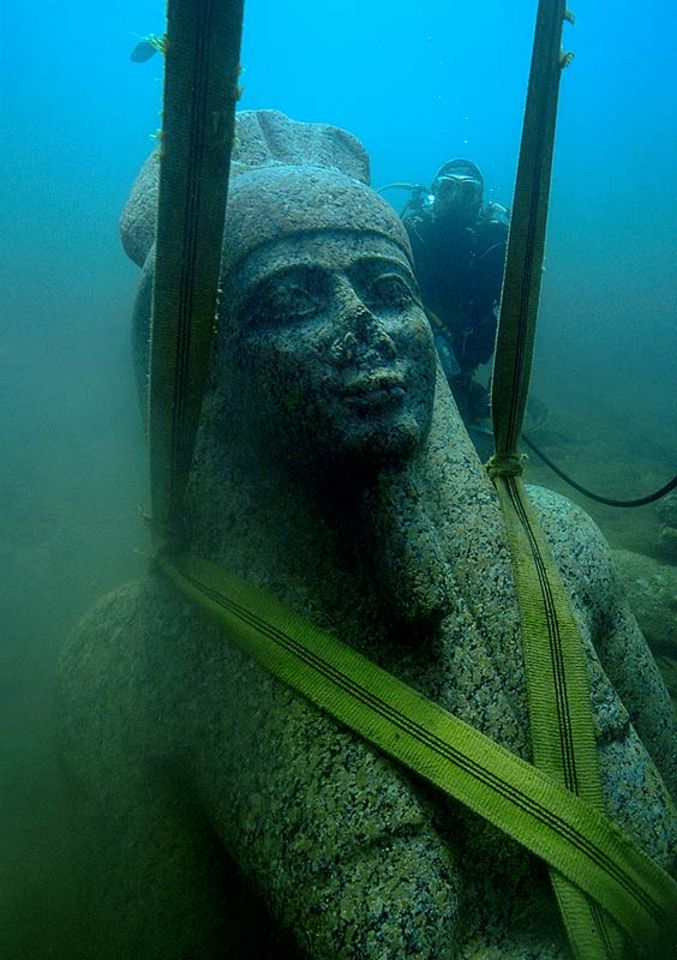
Historical Significance
Before Alexandria’s rise, Thonis-Heracleion was the gateway to Egypt, a mandatory port of entry for Greek ships. Its foundation dates back to around the 8th century BC, and it thrived until its eventual submersion in the 8th century AD. The city was not only a vital trade hub but also a religious center, home to the grand temple of Amun, which played a crucial role in the rites of dynasty continuity.
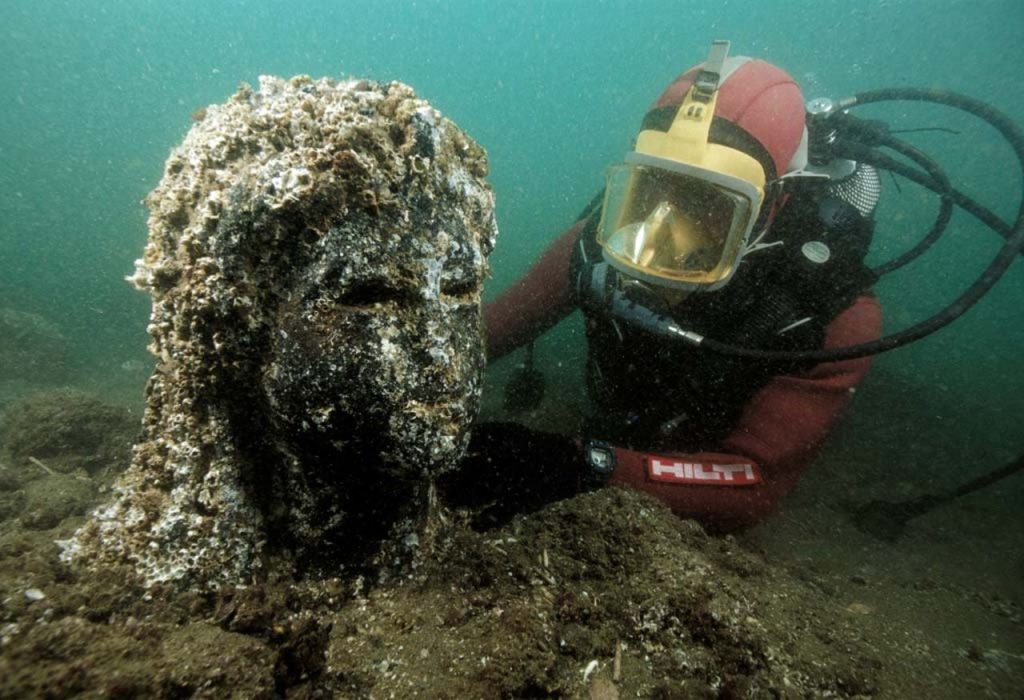
The Discovery
The European Institute for Underwater Archaeology (IEASM), under the leadership of Franck Goddio, in collaboration with the Egyptian Supreme Council of Antiquities, embarked on a groundbreaking underwater archaeological expedition. Utilizing advanced survey techniques and sophisticated equipment, the team located Thonis-Heracleion 6.5 kilometers off the modern coastline, submerged under approximately 10 meters of water. This monumental discovery was the culmination of years of meticulous research and exploration, beginning in 1996 and leading to the first significant finds in 2000.
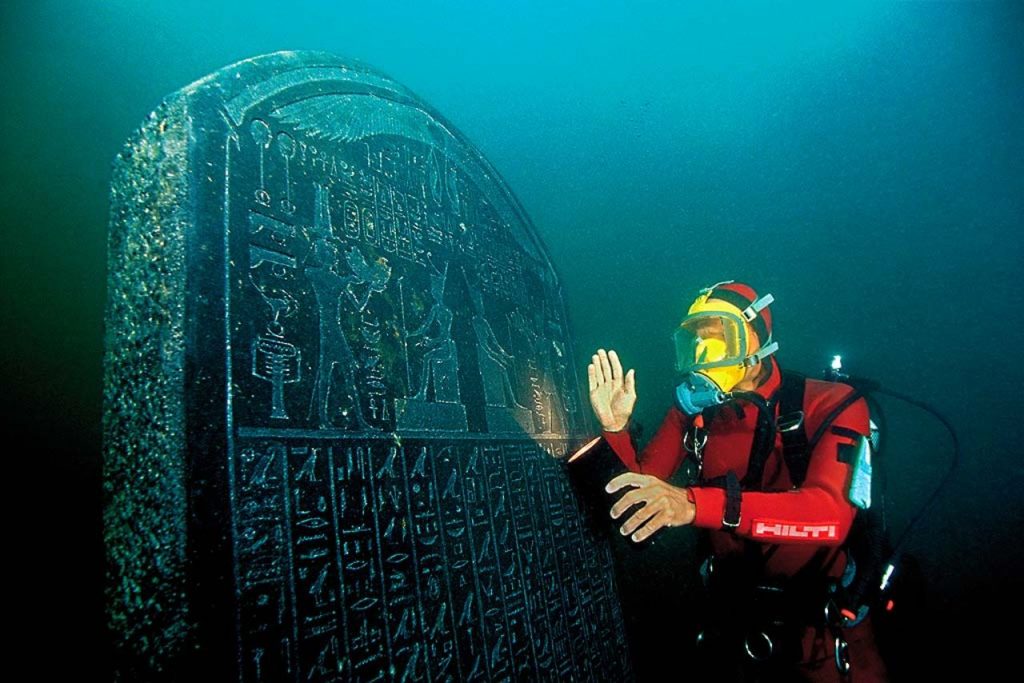
Unveiling the City
The excavations at Thonis-Heracleion have revealed a city of extraordinary wealth and beauty. Colossal statues, inscriptions, and architectural elements, alongside jewelry, coins, and ritual objects, have been unearthed, offering a glimpse into the city’s opulent past. The city’s layout, with its grand temples, harbors, and a network of canals, suggests a vibrant urban center bustling with activity.
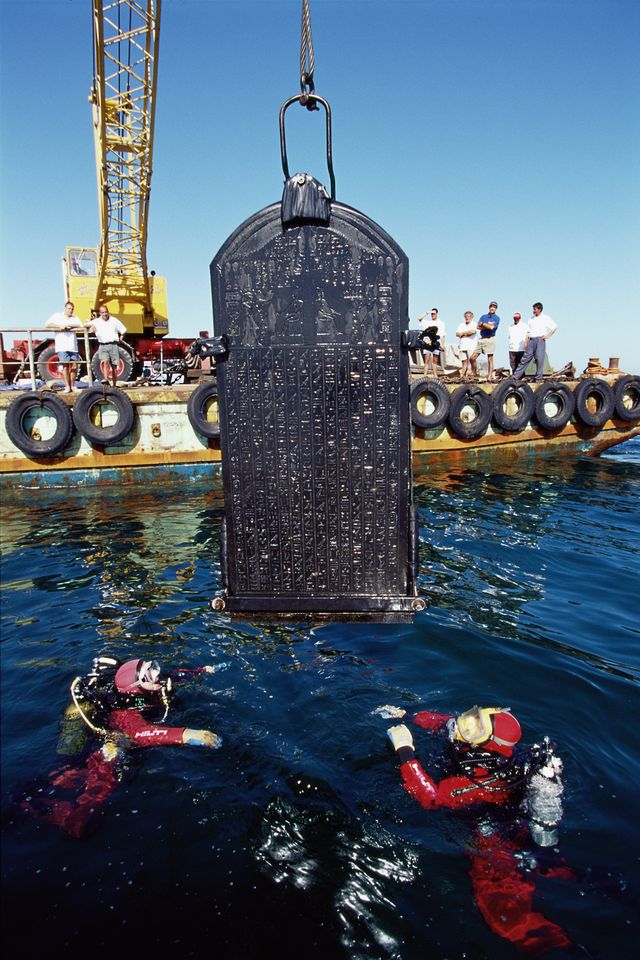
The discovery of over seven hundred ancient anchors and numerous shipwrecks dating from the 6th to the 2nd century BC attests to the city’s significance as a maritime hub. Furthermore, the site has been instrumental in solving the historical enigma of Thonis and Heracleion being one and the same city, a fact confirmed through the archaeological material found.
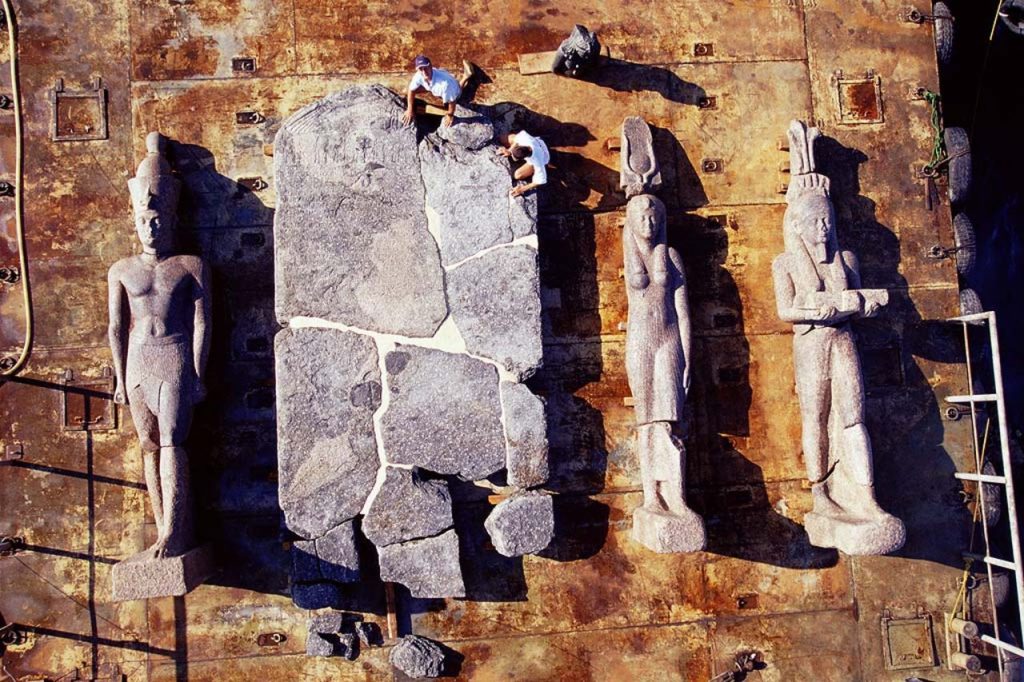
Religious and Cultural Melting Pot
Thonis-Heracleion was a site of immense religious importance, hosting the Mysteries of Osiris, an annual ceremony celebrating the rebirth of the god Osiris. This event underscores the city’s role as a religious center, attracting pilgrims from far and wide. The coexistence of Egyptian and Greek elements within the city highlights the cultural intermingling that characterized this ancient metropolis.
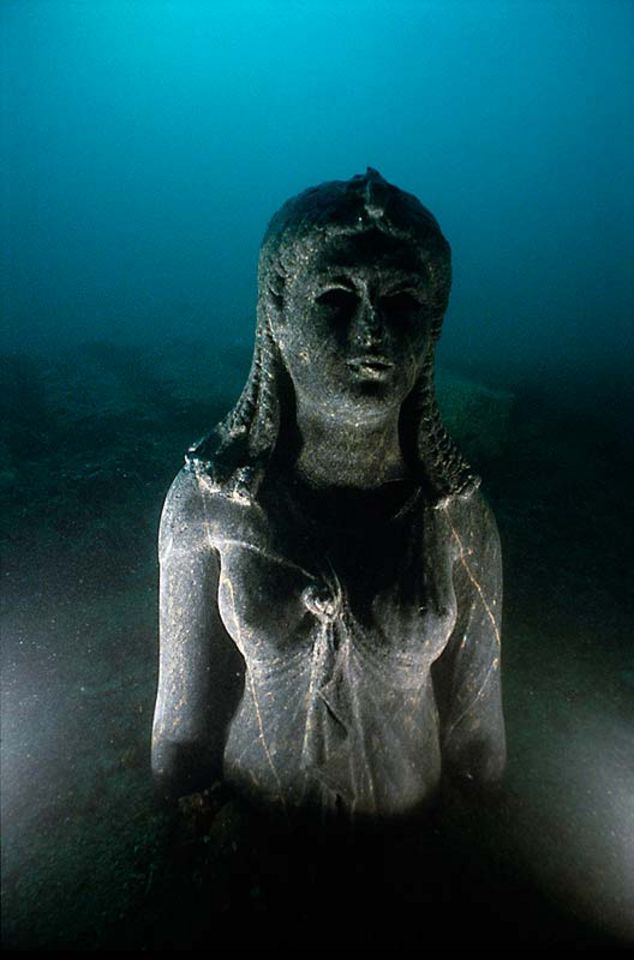
Legacy and Ongoing Exploration
The discovery of Thonis-Heracleion has revolutionized our understanding of ancient Egyptian and Greek relations, trade, and religious practices. It stands as a testament to the city’s historical significance and its role in the ancient world. With only a fraction of the city excavated, ongoing archaeological efforts continue to unveil new findings, promising further insights into this remarkable ancient city.
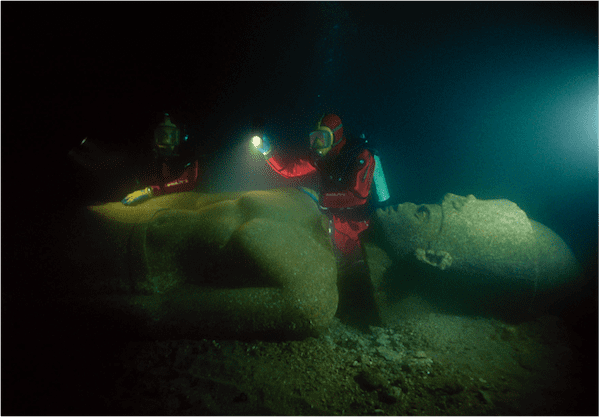
The story of Thonis-Heracleion, from its legendary beginnings to its rediscovery, encapsulates the allure of archaeology—the ability to uncover lost worlds and bridge the gap between past and present. As excavations proceed, the ancient city of Thonis-Heracleion will undoubtedly continue to fascinate and enlighten, offering a window into a world where legend and reality converge.
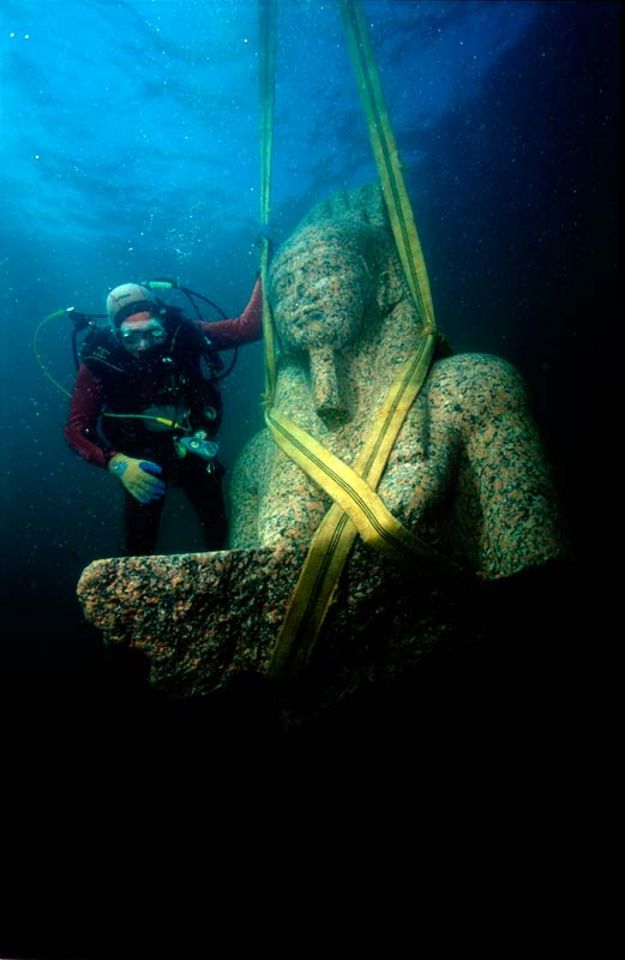
Sources:
https://www.franckgoddio.org/projects/sunken-civilizations/heracleion/
https://en.wikipedia.org/wiki/Heracleion

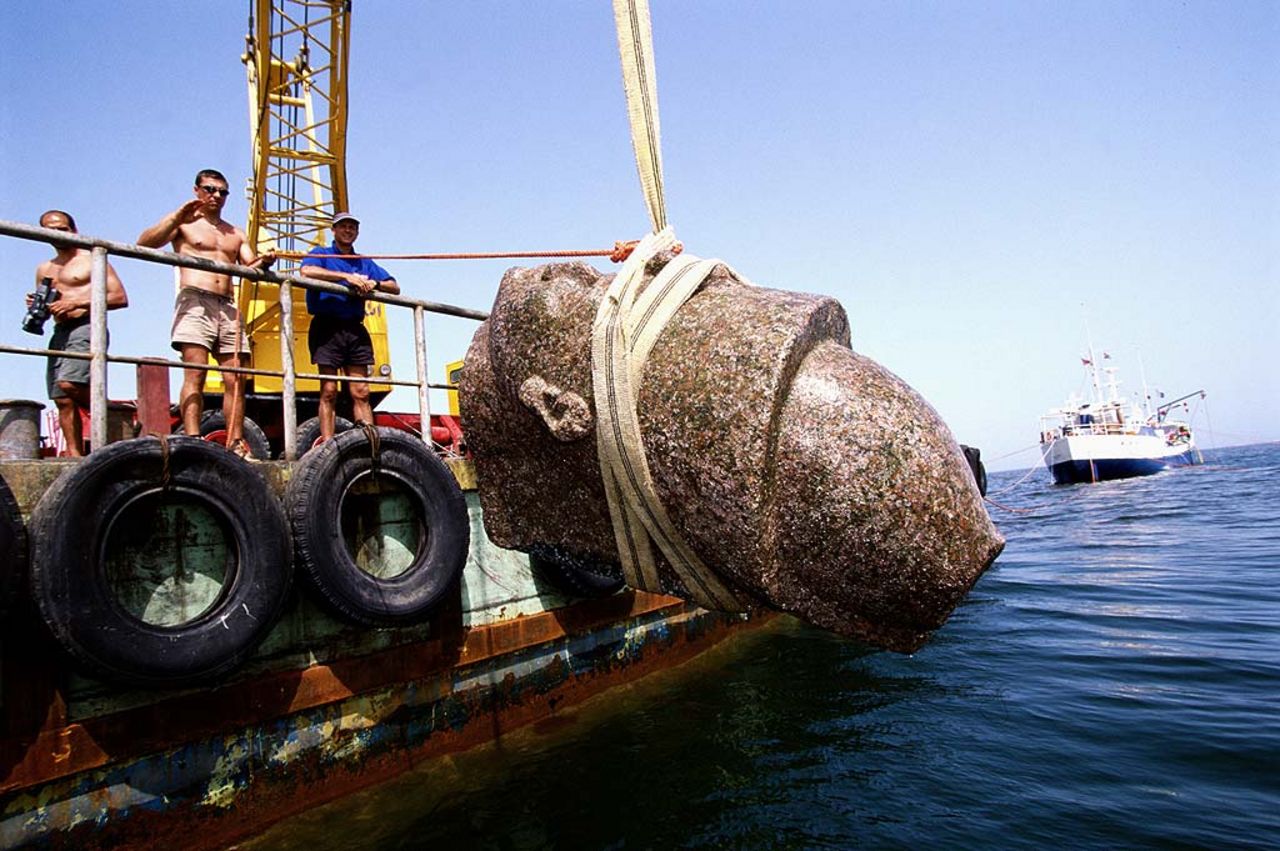
When did they find these?
6.5 kilometres off the coast of Egypt.